How to Make Cattle Feed Pellets? Is It Good for Cattle to Eat Feed Pellets?
Date: 03/05/2021 08:42:16 From: feed-pellet-plant.com Clicks:
With the continuous development and progress of the cattle industry, more and more farmers tend to choose feed pellets to feed their cattle. The use ratio of feed pellets has become an important indicator of the modernization level of a region's breeding. So how to make cattle feed pellets? Is it good for cows to eat feed pellets?
I. How to make cattle feed pellets?
How to make cattle feed pellets? For a cattle farm, you need at least one cattle feed pellet machine. For a large feed factory, you need not only a cattle feed pellet machine, but also a cattle feed pellet production line with crushers, mixers, coolers, and screening and packing systems.
1. How does the cattle feed pellet machine make cattle feed pellets?
The uniformly tempered material is first removed by the security magnet, and then evenly distributed between the pressing and mixing and the pressing die, so that the material enters the pressing area from the pressing area of the feeding area, and is clamped into the die hole by the pressing roller to continuously squeeze open. It is divided into a columnar feed, which is cut into pellet-like feed by a cutter fixed on the outside of the die as the die rotates.
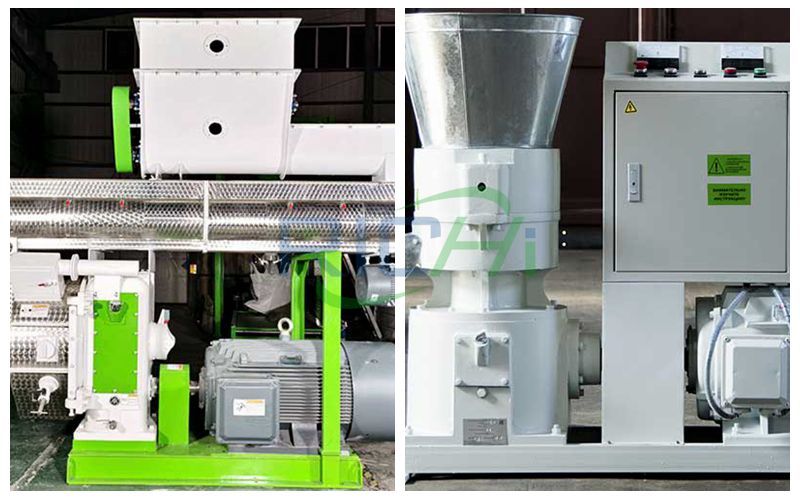
Ring die pellet machine and flat die pellet machine: equipment for making cattle feed pellets
2. How does the cattle feed pellet production line make cattle feed pellets?
(1) Raw material receiving and cleaning section: the raw materials that do not need to be crushed are input from the auxiliary feed port, and the debris and bulk materials are removed through the fence, and then transported through the conveyor and elevator to the primary cleaning screen to remove the ropes and larger pieces. The raw materials enter the magnetic separator to remove the metal debris, and then enter the batching warehouse, waiting for the batching, and the dust generated by the feeding enters the bag dust removal system for negative pressure dust removal. The raw materials that need to be crushed pass through the fence to remove the debris, and are sent to the primary cleaning screen by the hoist to remove the ropes, labels and other debris, and then the iron impurities are removed by the permanent magnet cylinder and then enter the warehouse to be crushed.
(2) Crushing section: the raw materials after magnetic separation enter the crusher, and the screens are selected according to the requirements of different product crushing fineness. The material first enters the feeding auger, and the feeding speed of the feeding auger is controlled by the inverter. The material passes through the feeding auger and enters the crusher for high-speed crushing. This process will generate a lot of heat and dust. This process uses a pulse dust removal system and adopts the negative pressure generated by a high-speed fan to make the crushed materials quickly pass through the screen of the crusher, which solves the heat and dust problems generated by crushing. The crushed materials pass through conveyors and elevators to the warehouse for ingredients.
(3) Batching and mixing section: The crushed materials and the raw materials that do not need to be crushed are sent to the batching process together. The batching adopts the automatic control system to carry out precision batching according to two proportions, and the liquid adding system adds soybean oil to the batching. The prepared material enters the granulating section through the conveyor and elevator.
(4) Granulation section: The materials from the mixing section are heated to 85°C by high-temperature steam for gelatinization, and then enter the granulator for granulation. The prepared teaching trough material particles enter the countercurrent cooling tower for exhaust air cooling, and the cooled particles enter the conveyor and elevator to the finished product warehouse.
(5) Finished product packing section: an electronic packing scale is installed under the finished product warehouse, and the packing scale will automatically quantify the packaging according to the adjusted and set amount, and then the bag mouth will be sewn by the sewing machine and automatically transported to the stacker to complete the processing process.
II. Is it good for cows to eat feed pellets?
1. What is the complete feed pellet
This type of feed product is also known as a complete diet compound feed. It is usually divided into various models according to the feeding objects (animal type, age, production purpose, etc.). This kind of feed can fully meet the nutritional needs of the feeding objects, and the user does not need to add any additional nutritional feeding materials, but must pay attention to choosing a full-price compound feed that matches the feeding object.
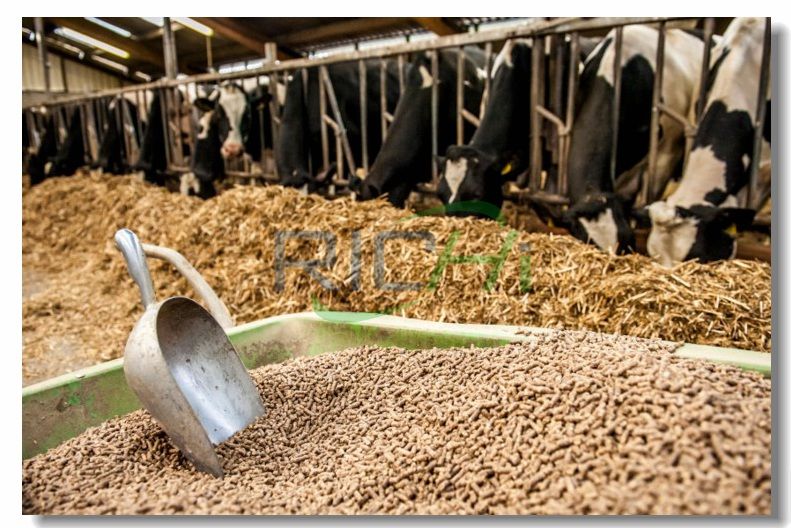
Cattle feed pellets
Among the full-price compound feeds, energy feeds account for about 55-75% of the total components, followed by protein feeds, accounting for 20-30% of the total feeds, and again are mineral nutrients, except for eggs. Outside of poultry, generally ≤5%, other such as amino acids, vitamins and non-nutritive additives (health care drugs, colorants, antifungal agents, etc.) generally ≤0.5%.
2. Advantages and disadvantages of complete feed pellet
Advantages: ① Convenient feeding; ② Low water content, easy to store; ③ Less waste than powder.
Disadvantages: ①The cost is too high. Compared with the premix, it is 0.2-0.4 yuan/kg more expensive; ②The composition is uncontrollable, because the composition of the feed cannot be seen; ③The vitamins will be destroyed by granulating at 70-90℃. About 50%), the activity of acid and enzyme preparations is reduced by about 80%, and the xylanase is reduced by 90%.
Advantages of complete feed pellet
1. Weight up to standard, affordable and assured
As we all know, the moisture content of self-made ingredients is about 2% higher than that of full-price feeds. In addition, we have also found that since ingredients users buy the raw materials, there is often a shortage of two pounds. This has been defaulted by everyone. Cattle farm owners have gradually begun to realize the economic value of this gap.
2. Simple feeding, saving labor
Taking a standard ten-thousand-head cattle farm (600 cows in stock), about 10 tons of materials are used per day, which requires about 2 workers to be responsible for the ingredients and handling. The salary + benefits are calculated at 6000 yuan per month and allocated to each The cost of a ton is 20 yuan. More importantly, it has become more and more common to have money but not to hire workers. The full-price feed can be fed directly after buying it and unpacking it, with little waste, which is very trouble-free.
3. The quality of raw materials is more guaranteed
For cattle farms with their own ingredients, because they do not have complete raw material testing facilities, it is difficult to avoid mycotoxin infection when purchasing raw materials based on experience. These things are invisible to the eyes and hands, but they are very harmful to the health of the cattle. . In addition, the cattle farm cannot accurately know the moisture and nutritional indicators of the raw materials. If the raw material dealers catch this adulteration, the cattle farm will not know. The full-price feed produced by formal feed enterprises can completely avoid these problems because of the quality of raw materials.
4. Balanced nutrition, scientific and safe
The full-price feeds of formal feed companies generally design products according to the nutritional needs of cattle and select a variety of high-quality raw materials. Such feeds are scientific. However, self-mixing has greater randomness, generally without scientific design, and the variety of raw materials is single, the accuracy of the ingredients is not enough, and the nutrition is difficult to be fully balanced.
5. Fewer respiratory diseases
There are many diseases in cattle farms, but more than 50% are related to the respiratory tract. The fine dust raised in the air can aggravate the condition, and the use of self-prepared ingredients is one of the important incentives. Since the ingredients are all powders, it is easy to lift up fine dust and enter the nasal cavity and respiratory mucosa of the cow, causing the cow to cough or aggravate the cough. In order to control the situation, cattle farms often use more veterinary drugs for treatment and prevention, and this problem does not exist in full feed.
6, grow faster
Through a lot of comparison, it is found that the full-price feed of the same grade is more than 0.2% lower than the self-mixed feed and meat ratio, which can save a lot of feed. At the same time, growing faster means that it can be slaughtered in advance, so that the utilization rate of the shed is higher, and the cattle farm of the same area can produce more cattle every year, which means more money.
7. Better digestion and absorption
Using self-ingredients, simply crushing and mixing several raw materials, without changing the raw materials itself, is equivalent to letting the cow eat "raw meal". The full-price feed technology is more advanced. The crushing, mixing, ingredients, and maturation and granulation of the raw materials can eliminate most of the anti-nutritional factors in the raw materials and make the feed easier to digest.
The above is the article for you: How to Make Cattle Feed Pellets? Is It Good for Cattle to Eat Feed Pellets?. If you are interested in our products or project solutions, please contact us. We will give you the best product quality and the best price. Email: enquiry@pellet-richi.com
Related Product
Production Line Equipment
related News
- >Uzbekistan Gizak 1t/h-2t/h Animal Feed Processing Plant for Floati
- >What is the price of the cattle and chicken feed machinery product
- >How to Choose Premix for Cattle Feed Manufacturers?
- >Cattle Feed Pellet Machine Solves the Problem of Cattle Feeding in
- >What Are the Costs to Consider When Investing in a Cattle Farm?
- >The Feed Pellet Machine Makes Corn Stalks Into Cattle and Sheep Fe
- >Practical | How to Prepare Cattle Premix to Achieve Fast Fattening
- >300kg-500kg Beef Cattle Feed Formula and Cattle Feed Pellet Machin
- >Cheats for Calf Feed Formula in Cattle Farms, What Feed Do Calves
- >Large-scale Commercial Feed Factory Cattle Cow Feed Pellet Machine
Here you can submit any questions and we will get back to you as soon as possible. We will not disclose the information you submit to anyone, please rest assured.
Copyright© 2022 Richi Machinery. All rights reserved. Site Map


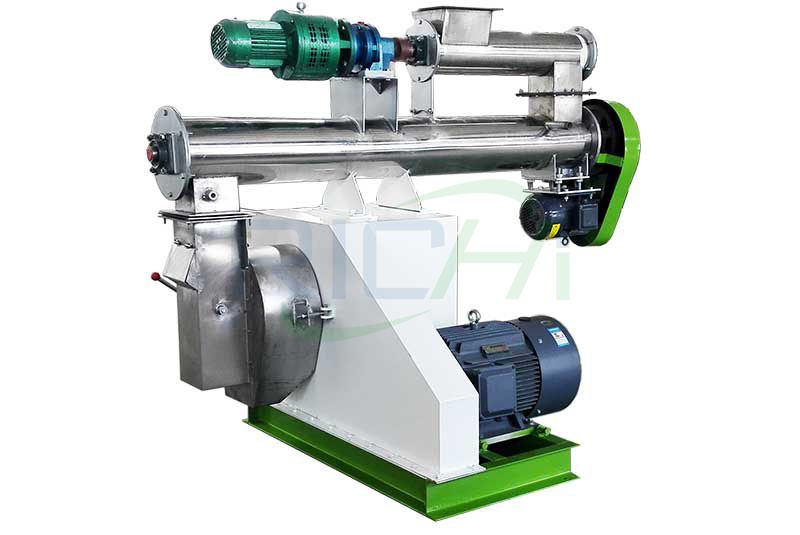
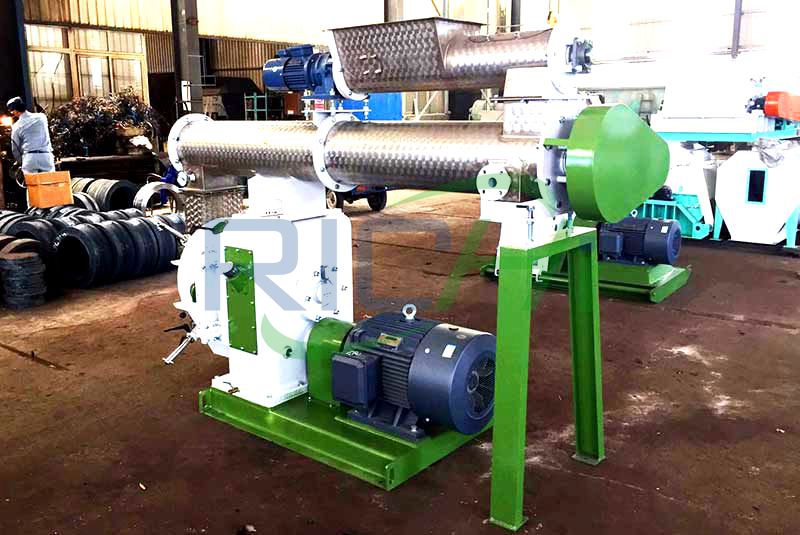
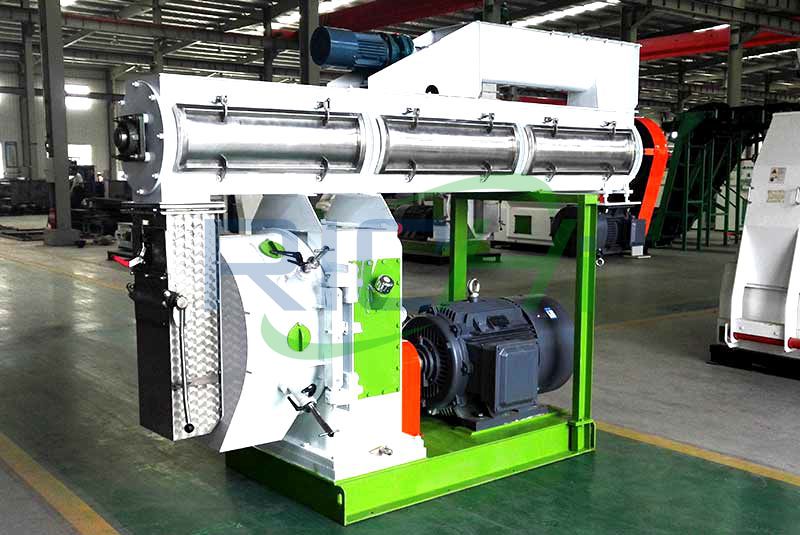
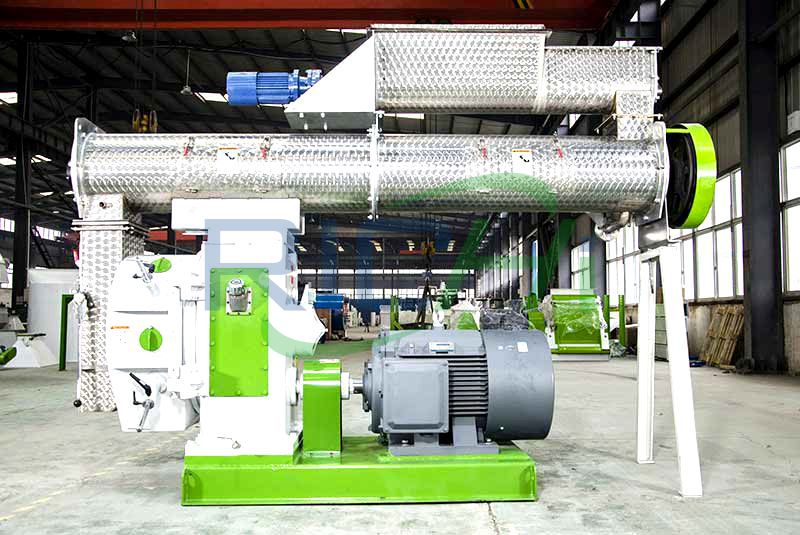
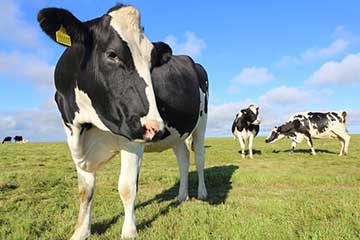
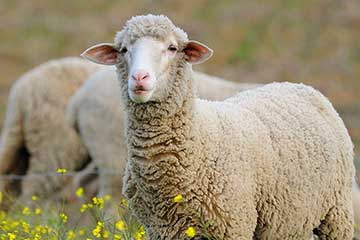
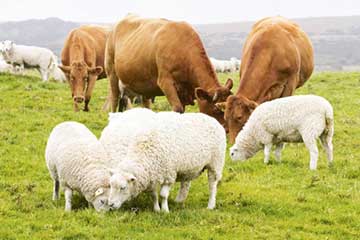
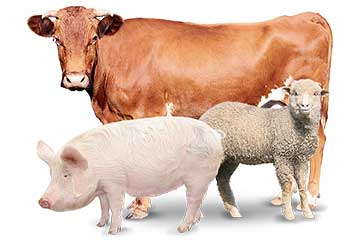
 Product Center
Product Center Get Latest Price
Get Latest Price